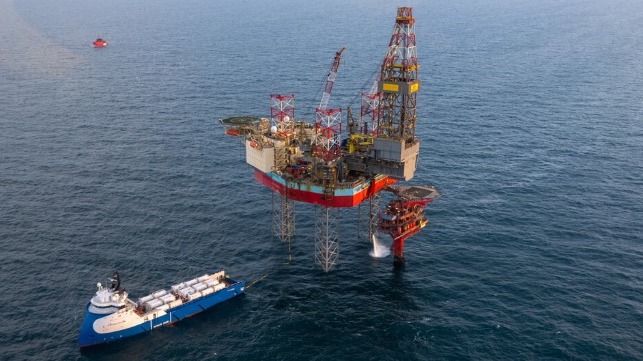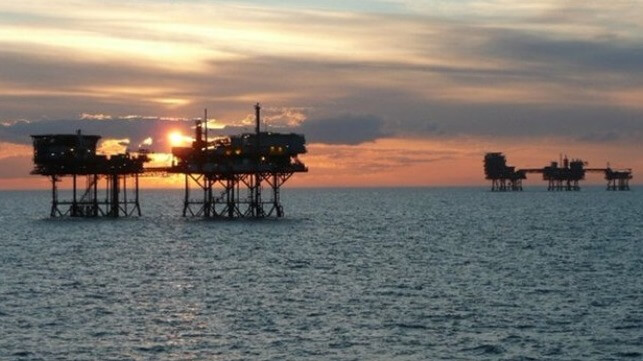2023 FORTY YEARS LATE
First CO2 Stored in World’s First Demonstration of CCS Process

The first successful demonstration of carbon capture and storage below the sea floor was completed yesterday by Denmark’s pioneering Project Greensand in what is being hailed as a watershed moment in the fight against climate change. After having been granted a demonstration license, the project which consists of a consortium of 23 organizations successfully for the first time in the world captured carbon emissions from an industrial plant in Belgium, transported it across international boundaries, and successfully injected it for permanent storage under the Danish North Sea.
“This is a big moment for Europe’s green transition, and for our clean tech industry,” Ursula von der Leyen, President of the European Commission addressing the launch event. She acknowledged the project as, “The first-ever full value chain, for carbon capture and storage in Europe.”
Project Greensand ranks among the most advanced CCS projects in the EU and was the first full demonstration of the process. Carbon emissions from a plant in Belgium operated by INEOS, a petrochemicals manufacturer, were captured and liquified. They were transported from Belgium and Denmark under a bilateral agreement that the two countries concluded last year.
The captured CO2 was loaded into canisters which were transported to a special outfitted offshore vessel, the Aurora Storm. Arriving at the depleted Nini West oil field in the Danish North Sea, a special pumping system transferred the liquified CO2 to the jack-up rig Noble Resolve which completed the injection process into the subsea bedrock. The CO23 is stored at a depth of about 1,800 meters (more than one mile) below the seabed and will be closely monitored.
“Project Greensand marks a leap forward for the development of a Europe-wide CCS infrastructure and therefore for climate protection,” said Mario Mehren, CEO of Wintershall, which along with INEOS is leading the project. “We are showing that it is possible to capture, transport, and store CO2 safely and reliably across national borders and the CCS technology will be able to contribute to a decarbonized tomorrow in the near future.”
His Royal Highness the Crown Prince Frederik of Denmark initiated the first CO2 injection in Denmark in an event that was also attended by Lars Aagaard, the Danish Minister for Climate, Energy and Utilities. Addressing the attendees, Sir Jim Ratcliffe, founder and chairman of INOES said, “This is a breakthrough for Carbon Capture and Storage. This important milestone firmly demonstrates that CCS is a technology that can deliver on a global scale.”
The demonstration phase will continue as the partners work to develop the full infrastructure and processes to scale up the operation. By early April, residual emissions from the Belgian industrial plant, collectively representing up to 15,000 tonnes of CO2, will be stored during the ongoing demonstration phase.
By 2025/2026, the partners plan to be storing up to 1.5 million tonnes of CO2 per year as part of Project Greensand. In the final expansion phase, scheduled to begin in 2030, plans call for storing up to 8 million tonnes of CO2 each year. This would represent more than 13 percent of the total annual emissions of Denmark.
The main goal is to store the industrial emissions that it will not be possible to avoid in the future. The European Commission has estimated that the EU will need to store up to 300 million tonnes of CO2 per year by 2050 to its climate goals.
UK Launches Market Study on Carbon Capture Utilization and Storage

After having moved aggressively in the development of offshore wind and becoming one of the countries with the largest offshore industries, the UK is now working to build its carbon utilization and storage industry. The Crown Estate and Crown Estate Scotland today started the first round of formal engagement with developers on Carbon Capture Utilization and Storage (CCUS), launching a joint survey to explore and understand market requirements for future seabed and subsurface carbon store development.
The UK Government has announced its target to have four active carbon stores in its waters by 2030. These sites would be in the areas managed by the two branches of the Crown Estate and as such the organizations are working to understand the emerging industry. They seek to develop best practices to facilitate the development of the industry while collaborating with the many users of the seabed, and taking a coordinated approach to its management.
“The UK is at a critical juncture for CCUS development, and we must continue the momentum toward our goals for 2030,” said Nicola Clay, Head of The Crown Estate New Ventures for Marine. “CCUS development is key to how we unlock the full potential of the UK seabed and its contribution to building a net zero future.”
The two divisions of the Crown Estate called today’s step an important milestone in the UK’s CCUS journey, with the results expected to shape future strategy for carbon store leasing. The survey will seek input on the number of stores, capacity levels, and annual injection rates that developers might seek to have in place by 2035 and by 2050. They are also seeking input on the opportunities and challenges to meeting the goals for CCS.
“We are already enabling the decarbonization of the UK’s energy network by supporting the leasing of offshore wind,” said Philippa Parmiter, Gas Storage Development Manager for Crown Estate Scotland. “CCUS is another key ingredient in helping to achieve a net-zero future, and this engagement program will help bring that ambition closer.”
They said the joint exercise is designed to help reduce the number of market engagement responses for developers and drive momentum toward setting leasing round requirements. Feedback will be shared with the North Sea Transition Authority (NSTA), which is responsible for carbon capture licensing, and The Crown Estate and Crown Estate Scotland will publish a summary of the main findings of these engagements.
Both organizations are working to understand market expectations on CO2 storage, and to support the Scottish and UK Governments' target dates of 2045 and 2050 to meet net-zero carbon emissions. Combined with other renewable technologies, such as fixed and floating offshore wind, they believe CCUS will play a key role in decarbonizing the UK economy by supporting power generation and heavy industry with hard-to-abate emissions, mitigating the effects of CO2 on the atmosphere.
Climate crisis: New carbon capture method revealed by scientists
BBC News
Mar 11, 2023
No comments:
Post a Comment